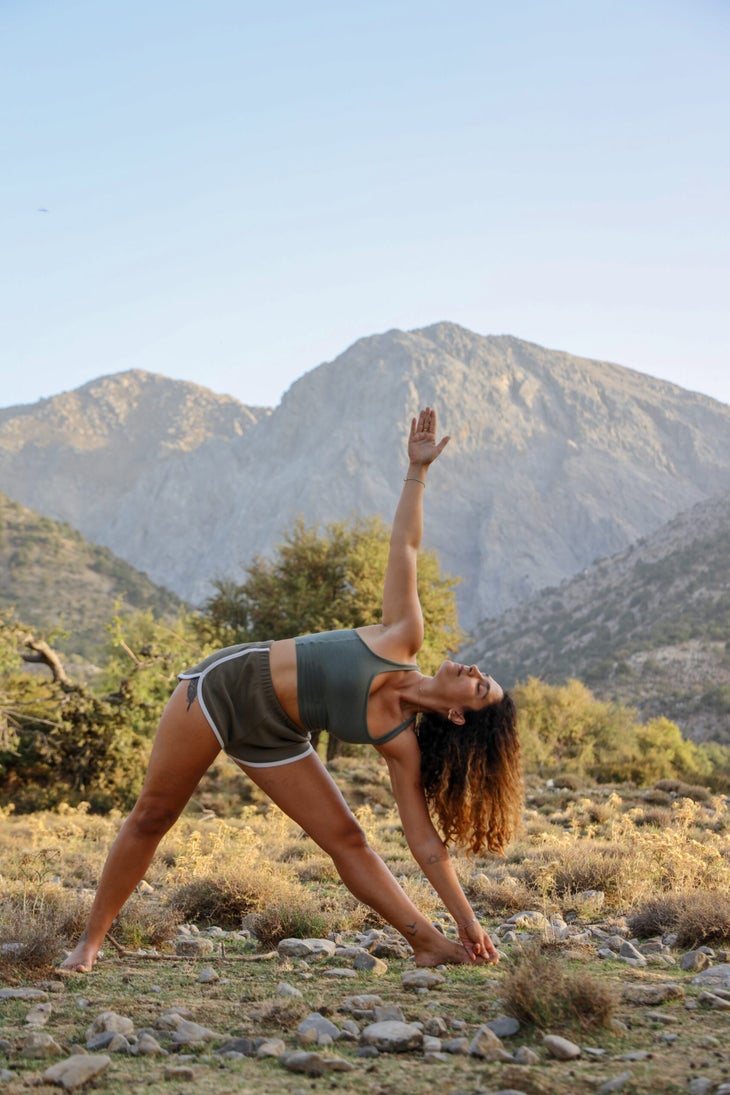Products You May Like
Get access to everything we publish when you
sign up for Outside+.
If you hear “a strong core” and instantly think of sharply defined abs, you’re not alone. “When talking about our ‘core’ we often focus on the parts that we can see or have been told by society that indicate a strong belly—the rectus abdominis, also known as the ‘six-pack’ muscle,” says Kristin Leal, a New York-based yoga teacher and the author of anatomy books including MetaAnatomy: A Modern Yogi’s Practical Guide to the Physical and Energetic Anatomy of Your Amazing Body.
But the truth is your core is a central structure of your body that’s key to your overall health. All of the abdominal muscles—plus the muscles in your back and pelvis—work together to help keep your body stable and balanced. They also protect your spine. Your core is doing a ton of structural work, even if you aren’t wearing washboard abs. The best way to respect the work your abs do every day is use these muscles with care.
Know your abdominal anatomy
There are four main abdominal muscles, says Richelle Ricard, yoga teacher and author of The Yoga Engineer’s Manual: The Anatomy and Mechanics of a Sustainable Practice.
- Rectus abdominis: A pair of long muscles that run from the sternum to the pubic bone, they allow you to flex forward. The appearance of a “six-pack” or “eight pack” comes from tendinous bands (inscriptions) that cross the muscles.
- Transversus abdominis: This is your deepest ab muscle, which wraps around the waist to stabilize and support the spine.
- Obliques: Inner obliques run diagonally up your sides; outer obliques slant down towards your public bone. Muscles that run in opposing directions such as the obliques, work against each other to stabilize your lumbar spine, Ricard says. Both sets help you flex and compress your trunk and bend to the side. Obliques are also rotational muscles that allow you to twist.
Abs and back are a symbiotic support system
The big rule in anatomy, Leal explains, is that everything is connected.
“Conceptually, we don’t usually think of the abdominals as spinal muscles,” Ricard says. But the transversus abdominis, and internal and external oblique muscles connect to the lumbar spine and fascia. They help stabilize your movement, hold your abdominal organs, and support the curvature of the spine
In whole body movement—including most yoga poses—the entire body has to work in coordination. This is especially true of the abdominals, explains Ariele Foster, a physical therapist and yoga teacher based in Washington D.C. She is the founder of Yoga Anatomy Academy.
“Abdominals need to work in conjunction with the diaphragm for respiratory health; with the pelvic floor for stabilization of your hips, as well as bladder control and urinary health; and with the multifidus muscles, which stabilize the lumbar spine to create a stable trunk,” she says. If one of those structures is dysfunctional, or not doing its part, it’s like a group project with lopsided effort, Foster adds.
Where your abs come into play
An important thing to remember is that your abs are nearly always “on” during typical movement throughout your day—not just when you’re holding Crow Pose or coming into Boat Pose. Your core muscles work together to stabilize the torso, says Foster, whether you’re doing yoga, sitting, squatting, or just walking to the mailbox. We most often think of the core in poses such as Crow, Boat or Plank, but they are also activated in more gentle poses such as Cat and Cow. And Triangle is one pose where all of your abdominals are activated at once. These unlikely poses can help strengthen your abdominals, too.

